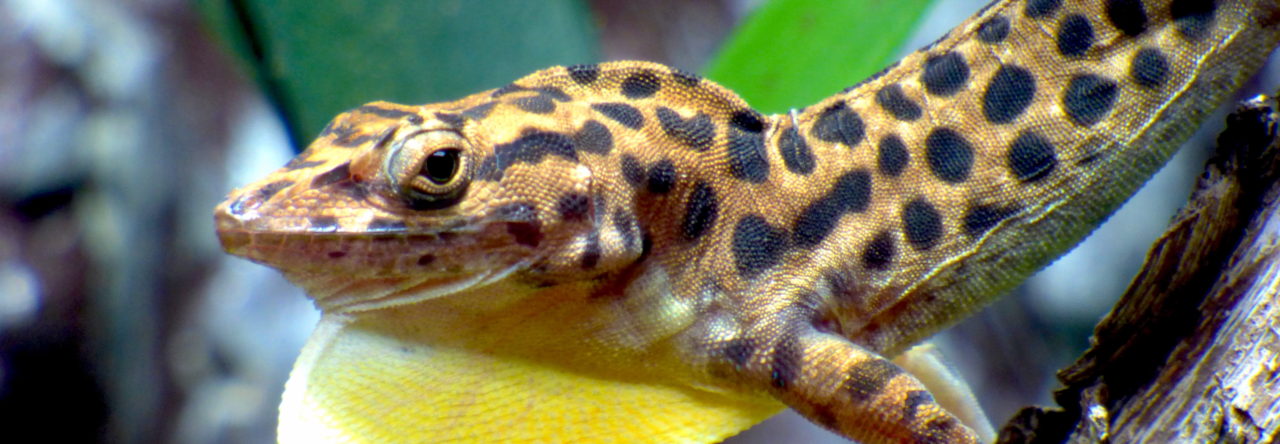 How do lizards move in nature? Note the added emphasis on “in nature.” For many years people have studied the mechanics and patterns of of lizard movement and anoles have played an important role in this research. But today Jerry Husak of the University of St. Thomas in St. Paul reminded us that most of this research has focused on characterizing maximum performance ability, despite the fact that animals rarely achieve this level of activity in nature. For example, most of the time many lizards are merely scurrying about on the ground and not sprinting at their full ability. Hence, although measuring maximal spring speed in the lab is a common theme, this measurement may not actually reflect what animals do in nature. Dr. Husak also stressed to the audience that animal locomotion is context dependent. Specifically, a lizard’s speed depends on whether it is moving in grass or over rocks, and whether it is foraging or fleeing from a predator. During his enlightening discussion, which included a description of him trying to sprint on a frozen Minnesota sidewalk, Dr. Husak described a series of biotic and abiotic factors that should be incorporated into models of terrestrial lizard movement. Finally, he concluded by challenging our obsession with maximum sprint speed once again by asking whether running at top speed can lead animals to make to costly mistakes. Based on a set of foraging data, he showed that this may be the case. Dr. Husak’s talk highlighted the importance of understanding the natural habits of lizard behavior and performance.
How do lizards move in nature? Note the added emphasis on “in nature.” For many years people have studied the mechanics and patterns of of lizard movement and anoles have played an important role in this research. But today Jerry Husak of the University of St. Thomas in St. Paul reminded us that most of this research has focused on characterizing maximum performance ability, despite the fact that animals rarely achieve this level of activity in nature. For example, most of the time many lizards are merely scurrying about on the ground and not sprinting at their full ability. Hence, although measuring maximal spring speed in the lab is a common theme, this measurement may not actually reflect what animals do in nature. Dr. Husak also stressed to the audience that animal locomotion is context dependent. Specifically, a lizard’s speed depends on whether it is moving in grass or over rocks, and whether it is foraging or fleeing from a predator. During his enlightening discussion, which included a description of him trying to sprint on a frozen Minnesota sidewalk, Dr. Husak described a series of biotic and abiotic factors that should be incorporated into models of terrestrial lizard movement. Finally, he concluded by challenging our obsession with maximum sprint speed once again by asking whether running at top speed can lead animals to make to costly mistakes. Based on a set of foraging data, he showed that this may be the case. Dr. Husak’s talk highlighted the importance of understanding the natural habits of lizard behavior and performance.
- Short Faces, Two Faces, No Faces: Lizards Heads Are Susceptible to Embryonic Thermal Stress - December 15, 2021
- The Super Sticky Super Power of Lizards: a New Outreach Activity for Grade-Schoolers - April 9, 2018
- Updates on the Development of Anolis as a “Model Clade” of Integrative Analyses of Anatomical Evolution - September 4, 2017


Leave a Reply